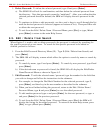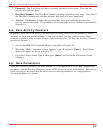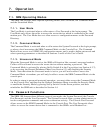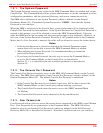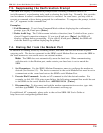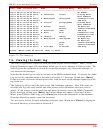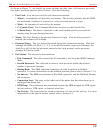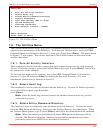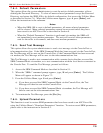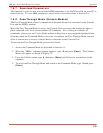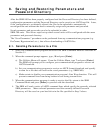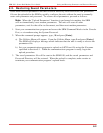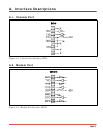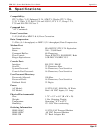
As shown in Figure 7.1, the Audit Log screen includes the date, time, call duration, port used,
user name, password entered, and exit status. Note the following:
1. Port Used: Lists the port used for each connection attempt:
• M(out): An outbound call placed by the modem. This usually indicates that the SRM
has performed a dialback in response to a user password entered at login.
• M(in): An inbound call received by the modem.
• C (Console Port): The Command Mode was accessed via the Console Port.
• S (Serial Port): The device connected to the serial modem port has accessed the
modem using the pass-through function.
2. Name: The User Name for the password entered at login. If an invalid password is
entered, this column will be blank.
3. Password Entry: The last password entered during this connection attempt. Note that
although the SRM will allow 1, 3, 5, 9, or an infinite number of password attempts, the
Audit Log will list the last password entered at the login prompt; earlier password
attempts will not be listed.
4. Exit Status: The reason for disconnection:
• Exit Command: The caller entered the /X command to exit from the SRM Command
Mode.
• Invalid Password: The caller did not enter a valid password within the allowed
number of password attempts.
• Dialing Back: The SRM ended the connection in order to perform a dialback
operation. For more information on the dialback function, please refer to Section 7.2.4.
• No Answer: The SRM has performed a Dial Back operation, and the Dialback Number
did not answer.
• Connection Lost: The party on the other end of the phone line has either hung-up or
unplugged the phone line.
• DTR Drop: The connection was terminated because the SRM dropped the DTR signal,
did not receive a DTR signal, or detected a bad line.
• No Activity: The connection has timed out because of a lack of data activity. For more
information on the timeout feature, please refer to Section 5.2.
7-6
SRM-100 - Secure Rack Modem, User's Guide Operation



